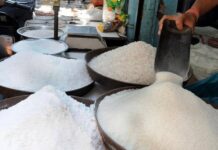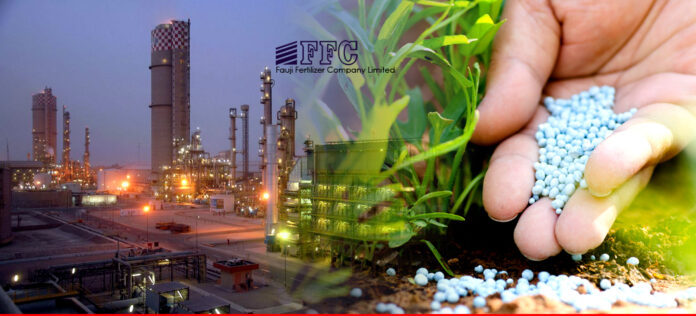LAHORE: The Economic Coordination Committee (ECC) on Monday approved the removal of Gas Infrastructure Development Cess (GIDC) for the fertilizer sector to decrease urea prices by Rs400 per bag following an assurance from Fauji Fertilizer Corporation (FFC) to the same, however, this development may cause a price disparity in the market.
Until Monday, the GIDC on fertilizer feed was Rs300/MMBTU and fertilizer fuel was Rs150/MMBTU.
FCC, Pakistan’s largest fertilizer manufacturer with a market share of 50 per cent, and Fauji Fertilizer Bin Qasim (FFBL) had been accruing GIDC in their costs whereas Engro Fertilizer (EFERT) had only been accruing in its old plant and not on its new plant (Enven) due to concessionary gas pricing. On the other hand, Fatima Fertilizer (FATIMA) was not accruing GIDC at all due to concessionary gas pricing.
According to Topline Pakistan Research, this development is positive for FFBL and DAP and ‘Neutral’ to ‘Positive’ for FCC if the complete reduction in GIDC is passed to the consumers, boosting the demand for urea. However, it added, the industry may try to reduce the urea prices by Rs350 per bag to recover from the Rs50 per bag hit it took at the time of GIDC imposition. “We expect this development to be negative for EFERT and FATIMA due to concessionary gas pricing,” it stated.
AKD research said this development would have mixed results.
“Assuming fertilizer players will pass on the positive impact to farmers by reducing urea price, it will result in a positive impact for FFBL (due to cost saving in DAP business) but negative for EFERT and neutral for FFC,” it stated.
“However, we also present sensitivity analysis by incorporating the recently proposed gas price hike. As per our calculations, the 136/32 per cent feed/fuel gas price hike will translate into Rs370 per bag, as per our estimates, bringing down the impact of gas price hike to Rs160 per bag. Assuming the fertilizer players do not pass on the excess Rs160 per bag impact (Scenario B), this will have negative earnings implications for FFC, FFBL and EFERT. If the fertilizer players will pass-on the differential between GIDC removal and revised gas prices to end consumers (Scenario C), it will keep FFC’s bottom line intact, with slight negative implications for FFBL, as DAP prices will remain the same,” AKD research added.
However, sources told Pakistan Today that this decision will result in a lot of ambiguity pertaining to future of urea prices since GIDC is not payable on the complete gas mix of other fertilizer manufacturers. In these circumstances, while FFC may reduce its prices by Rs405 per bag, Fatima Fertilizer and Engro Fertilizers will not be able to reduce the price.
When contacted, a senior official at FFC said that when they reduce the price it would have a great impact on farmers and they would be able to decrease their costs.
When asked how they expect to make a profit if they decrease the price by Rs405, the official said, “It will have an impact on our competitors as their profit margins will go down because they were not paying GIDC like us in the past but they were selling fertilizer at the same price as us.”
‘PRICE DISPARITY’:
A well-placed source in the industry told Pakistan Today that this implies that urea will be sold to fertilizer dealers at multiple prices who will then sell it at higher rates, hence benefitting from the price disparity with no benefit to the emerging gas circular debt and farmers.
When asked why there was no price disparity in the past when every player had a different GIDC impact, the source said that the price of urea, like any other commodity, is set by the demand-supply dynamics and the buyer’s purchase capacity. “As farm economics have improved over the past few years, the prices of urea have increased accordingly with no linkage to the GIDC,” the source said.
It’s worth mentioning here that GIDC was introduced in 2012 and had the full impact been passed on, the prices would have been almost Rs325 higher than the existing prices. So, all the players had already been absorbing GIDC to some extent.
The source also said that when one player increased prices in the past, the others waited to witness the acceptability of prices at a certain level. “It has always happened in the past and the urea demand has always shown minimal elasticity to the prices as the average annual demand has remained around 5.7 million metric tonnes over the past five years despite varying pricing levels,” the source added.
FERTILIZER SECTOR IN 2019:
In 2019, farm economics improved significantly due to which output prices also increased and this was reflected by the fact that the industry made record sales of urea, touching 6.2 million metric tonnes as against the past five years’ average of 5.7 million metric tonnes.
“Just during the month of December 2019, the industry recorded a sale of 1.4 million metric tonnes – highest ever in a month – at the current urea pricing level of Rs2,040,” the source added.
When demand and supply are at equilibrium, all players are needed to fill in the demand-supply gap as FFC alone can only meet 50 per cent of the market demand.
WHO WILL BENEFIT THE MOST?
Another well-placed source in the industry said that when FFC reduces the prices, other industry players might still maintain the prices as the affordability of these rates has already been established and tested.
“This will create confusion and in this confusion the big landlords will benefit the most (due to their purchasing power) along with dealers who will buy from FFC at reduced rate and sell at Fatima Fertilizer’s rate (whose rate would be highest due to lowest reduction in cost for them),” the source said.
“The industry players would still be able to command different prices due to the overall shortage of urea and in the medium term, FFC would increase prices back to the market level, considering that they would be the only one at loss in these circumstances with no benefit to the government and the farmer,” the source added.
WHAT WILL DETERMINE THE MARKET PRICE OF UREA?
Another well-placed source told Pakistan Today that while different players would continue to have disparity in their cost structures, as is the case right now, the selling prices of urea have been and would continue to be determined by the demand-supply dynamics and the capacity of the buyer to purchase.
He said that another U-turn is in the making as earlier in Sept 2019, Prime Minister Imran Khan had decided to withdraw the GIDC Ordinance.
The source said that the proposed mechanism of eliminating GIDC discriminately for the fertilizer sector only to benefit big landlords would seriously undermine the ongoing litigation on GIDC settlement. To support big landlords and certain influential business groups, the government is compromising its GIDC case that may cost the nation Rs800 billion, the source claimed.
The industry players did not agree to the level of urea price reduction with the Ministry of Industries and Production (MoI&P). “In a supply constrained industry with varying GIDC in the cost structure, waiving GIDC will lead to varying price levels and create confusion,” the source added.
The source further said that GIDC is already part of the federal budget, therefore, waiver of GIDC will further exacerbate the piling fiscal deficit.
“The government is discriminately benefiting an industry [FFC] at the cost of nation at large,” a senior official at a fertilizer plant said, adding that progress on TAPI and similar other pipeline projects would be seriously jeopardised with this decision.
ALTERNATIVE PROPOSAL:
The official said that an alternative proposal made to the industry called for abolition of prospective GIDC coupled with an increase in fertilizer feed gas prices which would provide relief to the burgeoning Gas Development Surcharge (GDS) deficit while ensuring no change in urea prices.
This would have brought Rs50bn to the government in the form of GDS reduction whilst bringing the prices of fertilizers feed somewhat closer to the general industry – though still almost half even with the proposed increase, the official added.
























